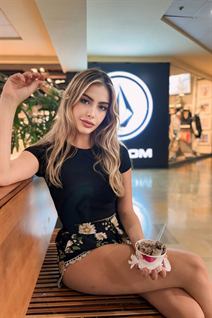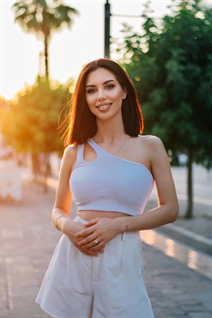Russian Women's Features: An Insight into Facial and Physical Traits
Russian Beauty Standards: Key Characteristics
In Russia, perceptions of female beauty are deeply intertwined with cultural memory, regional geography, and historical identity. The traits most frequently associated with Russian women—light skin tones, blue or gray eyes, ash-blonde to chestnut hair, and slender but curvaceous builds—didn't emerge arbitrarily. They are products of ancestry shaped by centuries of East Slavic roots, Finno-Ugric admixture, and adaptation to a cold northern climate with low UV exposure, which helped preserve lighter pigmentation and dense hair textures.
Historically, a clear complexion and bright eyes were seen not only as signs of health but as markers of spiritual and moral purity in Russian folklore and Orthodox Christian iconography. Similarly, high cheekbones and defined waistlines—traits common in both peasant and noble lineages—gained symbolic weight in literature and visual arts, from the peasant heroines in fairy tales to the aristocratic portraits of the Tsarist era.

These beauty norms continue to shape modern expectations, particularly in fashion and media, where women are often portrayed with elongated features, minimal expression, and restrained elegance. While urban trends evolve, traditional standards still inform grooming, posture, and self-presentation across generations.
This foundational understanding of Russian aesthetic ideals sets the stage for a closer look at one of the most defining aspects of national appearance: the facial features of Russian women.
Russian Women's Facial Features
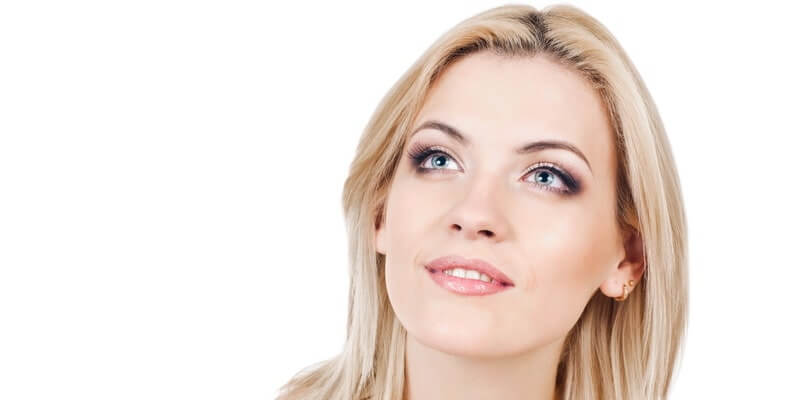
Russian women exhibit facial structures shaped by centuries of Slavic, Nordic, Uralic, and Central Asian genetic input, combined with the selective pressures of their varied climate. The result is a facial morphology that blends sharp bone contours with soft tissue symmetry, offering distinct visual cues of national and regional ancestry.
Forehead and Brow Line
The forehead is typically broad and vertically extended, especially in women from northern and central regions. The brow line is smooth and horizontal, with naturally arched or slightly sloping brows. This skeletal prominence in the frontal bone often contributes to an open, perceptive expression. The supraorbital ridge is subtle, but well-developed in some areas where Finno-Ugric ancestry is stronger, such as Karelia and Komi.
Cheekbone Projection
Zygomatic bones are highly pronounced—arguably the most defining feature of the Russian female face. These cheekbones often sit high and laterally, giving the mid-face area a sculpted, elevated appearance. This trait is linked strongly to Slavic and East Baltic ancestry, which contributes to the visual perception of depth and structure in both frontal and profile views.

Jawline and Chin
The mandible is generally narrow with a rounded angle, resulting in a tapered, V-shaped jawline. The chin tends to be small to medium-sized and slightly forward-projecting, offering balance without protrusion. Women in the Ural region may show broader mandibular features, reflecting ancient Turkic and Tatar influence.
Nose Structure
The nasal bridge is straight and moderately elevated, neither aquiline nor low-set. The nasal dorsum is smooth, with a narrow to medium width and limited flaring of the alae. In colder climates like Siberia, a shorter nose with a compact tip appears more frequently—an adaptation that minimizes heat loss, echoing Bergmann's Rule in human morphology.
Defining National Features:
- High, laterally extended cheekbones – a dominant visual marker rooted in Slavic and Finno-Ugric lineages.
- Straight, narrow nose bridges with low nostril exposure – frequent in Russian women across urban populations.
- Broad forehead combined with a gently pointed chin – forming a near heart-shaped facial silhouette in many regions.
Facial characteristics vary by region: women from Moscow or St. Petersburg often display more Central European symmetry, while southern Russian women may show traces of Caucasus or Turkic traits in the orbital and nasal zones. In all cases, the facial anatomy of Russian women reveals a layered history—etched in bone and softened by climate.
Hair and Eye Color Traits Among Russian Women

The natural hair and eye color patterns of Russian women reveal centuries of genetic stratification and adaptation to diverse regional climates, ancestral migrations, and ecological conditions across the Russian Federation. These traits serve as visible markers of local identity and historical lineage.
Eye Color and Shape
Eye pigmentation among Russian women spans a broad spectrum. The most common shades are gray, light blue, and green, especially in the northwest and central regions. Hazel and light brown eyes occur more frequently in southern zones like Rostov or Krasnodar, where Turkic, Caucasian, and steppe influences are genetically stronger.
Almond-shaped eyes dominate the population, though slightly rounded or deep-set variations appear across urban centers with mixed ancestry. Hooded eyelids are common among Slavic populations, often paired with pale irises that reflect light dramatically in low-UV environments. In regions with Finno-Ugric roots (e.g., Karelia, Komi Republic), women frequently exhibit narrow-set eyes with a more epicanthic fold, linking back to ancient Eurasian gene pools.
Hair Color and Structure
Natural hair colors among Russian women range from ash blonde and light brown to dark chestnut, with platinum and golden tones prevalent in the north, and deeper brunettes emerging in the south. Red hair is rare (<1.5%) but appears sporadically in mixed Slavic-Scandinavian lineages near the Baltic frontier.
Hair texture is typically straight to lightly wavy, with a moderate follicle diameter and medium-to-high strand density. Northern and central Russian women often have voluminous, thick hair, while southern populations may show slightly finer strands, shaped by climate and dietary variations (e.g., less omega-rich fish in drier regions).
Notable Combinations and Cultural Views
Blonde hair paired with green or gray eyes is one of the most admired combinations in Russian culture, often romanticized in literature and film as the epitome of Slavic beauty. Conversely, dark hair with light eyes is considered “mystical” and commands social fascination, especially in metropolitan centers.
These combinations of hair and eye color, paired with traditionally admired facial features and body proportions, contribute to the global perception of Russian women as highly desirable partners. This is particularly evident on international dating platforms, where the image of a Russian girl for marriage is often associated with beauty, intelligence, and a strong sense of family values. Many men turn to a Russian girl dating site to meet women who combine traditional charm with modern ambitions. For many foreign men, the appeal lies not just in physical traits but also in the cultural emphasis on loyalty, education, and nurturing qualities.
Body Shape and Height Characteristics of Russian Women
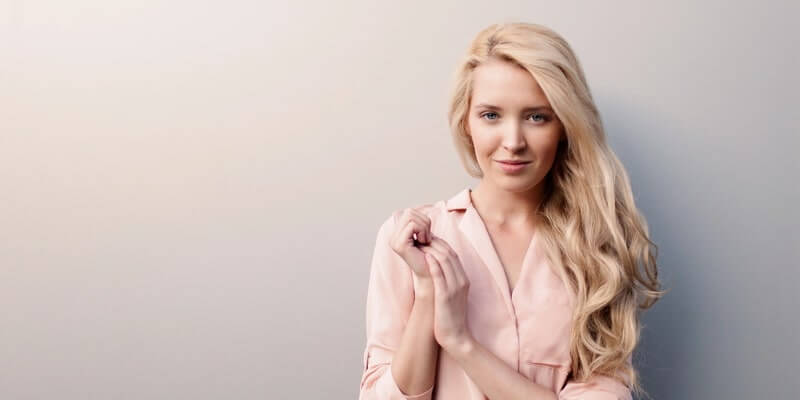
Russian women display a spectrum of body types influenced by ancestral genetics, regional environments, and lifestyle factors shaped over generations. From the taiga to the Black Sea coast, the physical build of Russian women reflects both biological inheritance and cultural adaptation to geography and labor demands.
Average Height and Regional Variation
The national average height for Russian women ranges between 165–168 cm (5 ft 5 in to 5 ft 6 in). Urban populations, particularly in cities like Moscow and Yekaterinburg, tend to be taller due to improved nutrition, healthcare access, and sedentary lifestyles. In contrast, rural women—especially in agricultural zones like the Volga or Ural regions—may average slightly shorter but often display more muscular builds due to higher physical workloads.
Body Proportions and Structure
A typical Russian female physique includes moderate to broad shoulders, a relatively elongated leg-to-torso ratio, and well-defined waistlines. The pelvis tends to be wider, giving rise to curved hip structures and a balanced lower body. Chest size varies, with medium to full busts more common in Slavic and Central Russian populations, while women in the Caucasus and Siberia may exhibit more compact frames due to ethnic variation.
Dominant Body Shapes and Influences
The most prevalent body types include the hourglass and rectangular silhouettes. The hourglass form, with its defined waist and proportional hips and shoulders, is often attributed to Slavic and Baltic genetic patterns. Rectangular builds, with straight lines and minimal waist indentation, are frequently observed among women of Uralic or Turkic descent.
Physical labor and traditional diets—rich in root vegetables, fermented dairy, grains, and limited processed sugars—contribute to naturally athletic or robust body types. In mountainous regions such as Dagestan or Altai, women tend to be shorter and denser in muscle mass, shaped by centuries of elevation-based activity and climate adaptation. Coastal women around the Baltic may have leaner frames, shaped by fish-based diets and maritime lifestyles.
Fashion and Cultural Fit
Russian fashion, especially in post-Soviet design, emphasizes the waistline with cinched coats, belted dresses, and tailored silhouettes. Clothing is often designed to accentuate curves or elongate the legs—mirroring the most common body features in the population. Beauty culture respects natural structure, yet favors proportionality and visible fitness, aligning clothing aesthetics with genetic norms rather than imposed ideals.
These physical attributes, combined with confident self-presentation and cultural emphasis on femininity, often shape perceptions beyond just aesthetics. In intimate relationships, Russian women in bed are frequently described—both anecdotally and in lifestyle commentary—as passionate, attentive, and emotionally engaged. These traits are influenced by deep-rooted social customs where emotional intimacy is seen as a vital component of partnership, not just physical connection.
Russian Women's Fashion and Beauty Aesthetics

Russian women's clothing styles are influenced by a blend of climate, cultural heritage, and social norms, creating a distinct fashion identity that shifts between traditional, everyday wear and more formal attire. In urban settings like Moscow and St. Petersburg, modern trends are often fused with classical styles, while in rural areas, regional dress traditions may still be seen.
For everyday wear, Russian women typically favor functional, comfortable pieces—fabrics like cotton, wool, and denim dominate casual outfits, often in neutral or muted tones such as black, gray, beige, and deep blues. Layering is common, with jackets, cardigans, and scarves frequently seen due to the cold climate, particularly in the northern and mountainous regions. Boots are popular year-round, with winter models designed for insulation and comfort, while flats or sneakers are worn in warmer months.
Formal wear tends to be more structured, with tailored suits, dresses, and skirts in classic silhouettes. Dark colors—especially black, navy, and burgundy—are favored for their elegance and versatility. However, bold, rich hues like emerald or ruby red occasionally make an appearance in formal occasions, particularly in the capital. Traditional garments, like embroidered blouses or shawls, may also be worn on holidays or special events.
Footwear varies by season, but high heels are a common fashion choice for formal settings, often complemented by statement accessories like handbags, scarves, and jewelry. Hairstyles range from sleek, controlled styles in professional settings to loose waves or neat braids for casual occasions.
Generational differences are evident: younger women, particularly in cities, embrace global trends, from Instagram influencers' trendy outfits to high-fashion brands. Meanwhile, older women tend to maintain a more conservative approach to dressing, emphasizing modesty and practicality. The influence of social expectations—modesty in the workplace or at religious events—often plays a key role in shaping choices across age groups.
Common Myths About Russian Women
| Myth | Explanation |
| All Russian women are blonde | While blonde hair is common, especially in northern Russia, the majority of Russian women have dark brown or black hair. According to studies, around 30% of Russians have naturally blonde hair. |
| Russian women are cold and unemotional | Russian women may appear reserved in public, as emotional restraint is culturally valued, but they are deeply emotional in their personal lives. This stereotype ignores the close familial bonds and emotional expression in private settings. |
| Russian women drink excessively | While Russia has a culture of drinking, the idea that all Russian women drink heavily is a misconception. In fact, the number of women who abstain from alcohol or drink moderately has been rising, particularly in urban centers. |
| Russian women are all looking for rich husbands | This stereotype is largely fueled by media depictions and dating sites. While financial stability is valued, it is not the primary factor in relationships for most Russian women. Many prioritize love, companionship, and mutual respect. |
| Russian women are submissive | The image of Russian women as submissive is outdated. While traditional values around family may persist, Russian women today are highly educated, career-driven, and actively challenge gender stereotypes. |
Individual personalities are far more complex than stereotypes suggest, and the diversity within Russian women's backgrounds, aspirations, and behaviors proves that no single characterization can be fully accurate.
Notable Women Who Shaped Russian Culture and Society
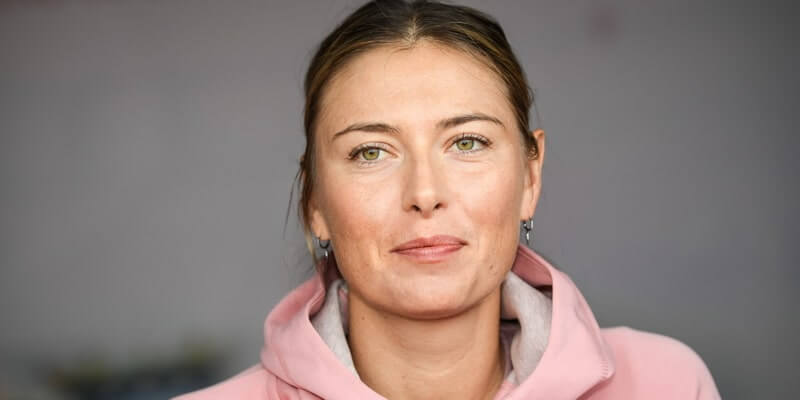
Russian women have made profound contributions across various fields, shaping both national identity and global culture. Here are a few who stand out for their achievements, influence, and cultural significance:
- Valentina Tereshkova (Space Exploration): As the first woman to fly in space, Tereshkova remains a symbol of Soviet progress and female achievement in science and technology. Her groundbreaking 1963 mission not only defied gender norms but also solidified her status as an icon of Soviet innovation and empowerment for women in male-dominated fields.
- Anna Akhmatova (Literature): A towering figure in Russian literature, Akhmatova's poetry resonated with themes of love, loss, and survival during the tumultuous Soviet era. Her work, which often criticized the government indirectly, made her an important voice in the cultural resistance to Stalinist repression and a symbol of artistic courage.
- Ekaterina Furtseva (Politics): Furtseva broke new ground as the first woman to hold a cabinet position in the Soviet Union, serving as Minister of Culture. Her tenure (1954–1964) helped shape Soviet arts policy and bolstered the presence of women in Soviet political life, despite the significant barriers she faced in a male-dominated system.
- Maria Sharapova (Sports): Known internationally for her tennis career, Sharapova became a household name not only for her athleticism but also for her entrepreneurial ventures. Her success has made her a symbol of Russian talent in the global arena, contributing to changing perceptions of Russian women's roles in both sports and business.
- Lyudmila Pavlichenko (Military): A legendary Soviet sniper during World War II, Pavlichenko became one of the most effective female soldiers in history. Her bravery and extraordinary skills reshaped the image of women in the Soviet military, challenging traditional gender roles and inspiring generations of women to embrace strength and resilience.
These women reflect the diversity of Russian values, demonstrating resilience, intellect, and leadership that have altered the course of Russian and global history.
In summary, the physical, behavioral, and cultural traits of Russian women are shaped by centuries of history, regional diversity, and social evolution. From traditional beauty standards to modern expressions of individuality, Russian women navigate a complex set of societal expectations and stereotypes, challenging and redefining roles across various fields. Their resilience and influence—whether in literature, politics, sports, or space exploration—demonstrate a rich legacy that continues to shape both Russian and global identity.
